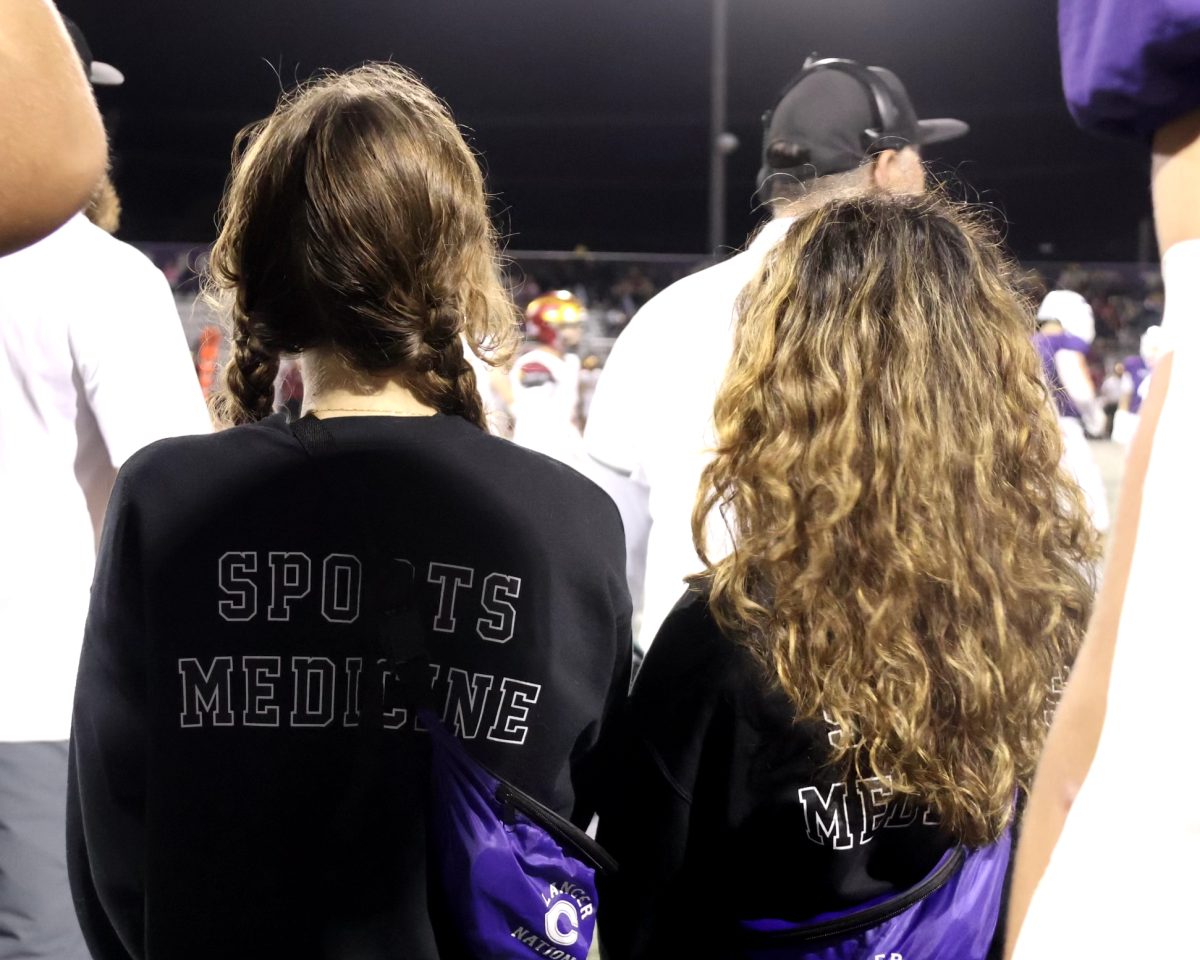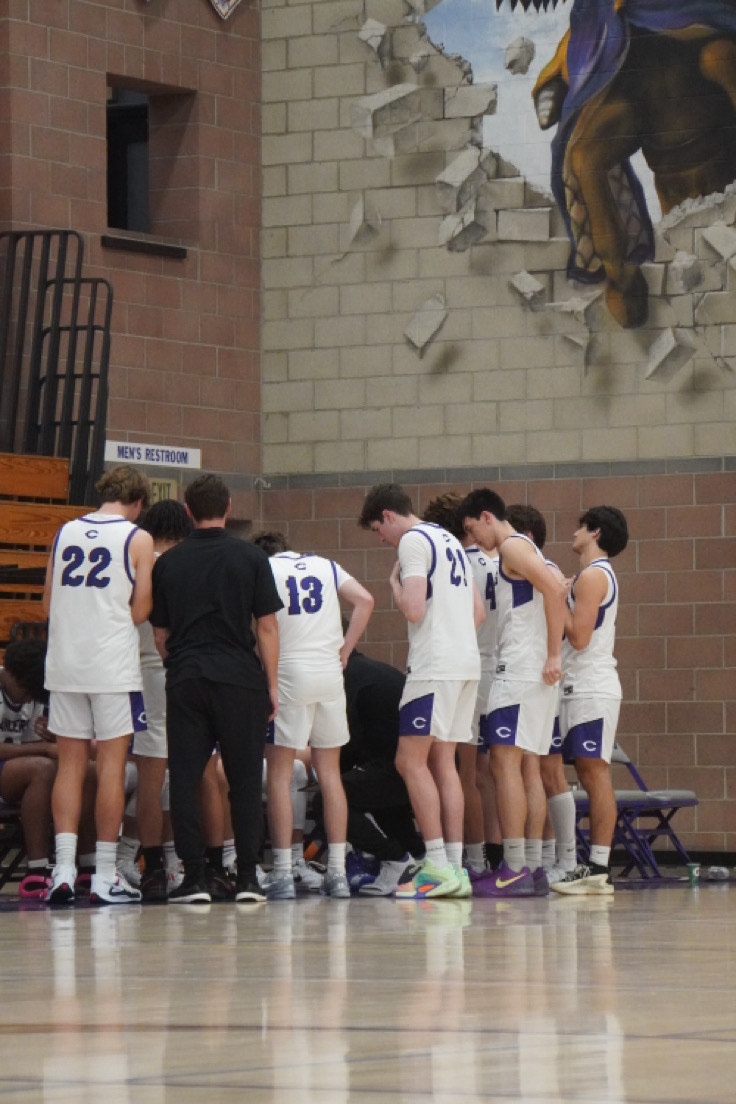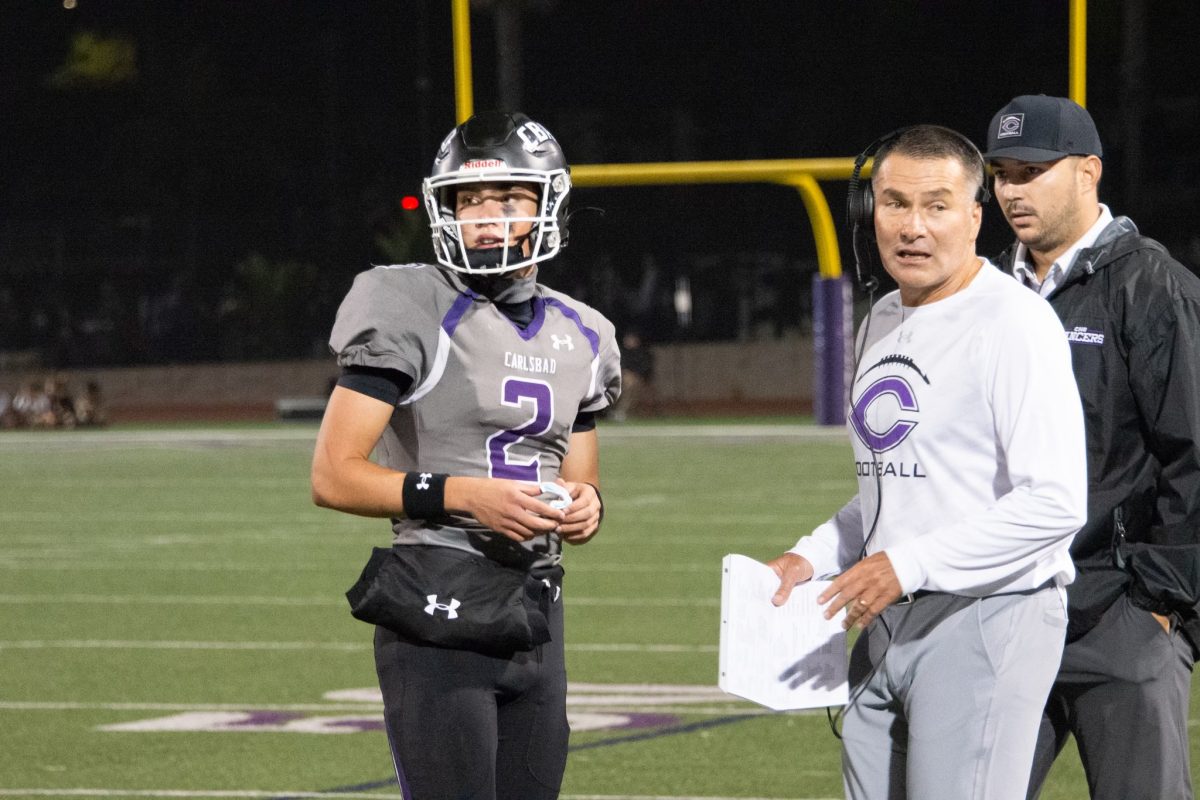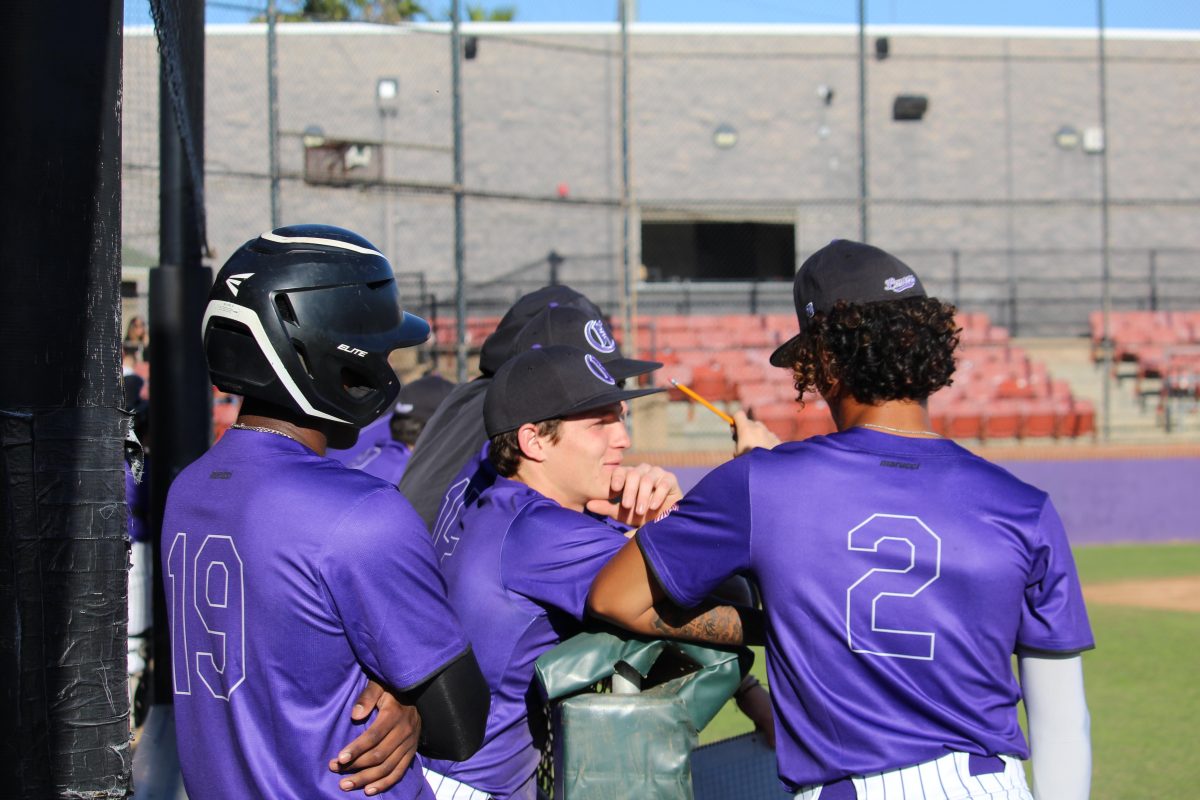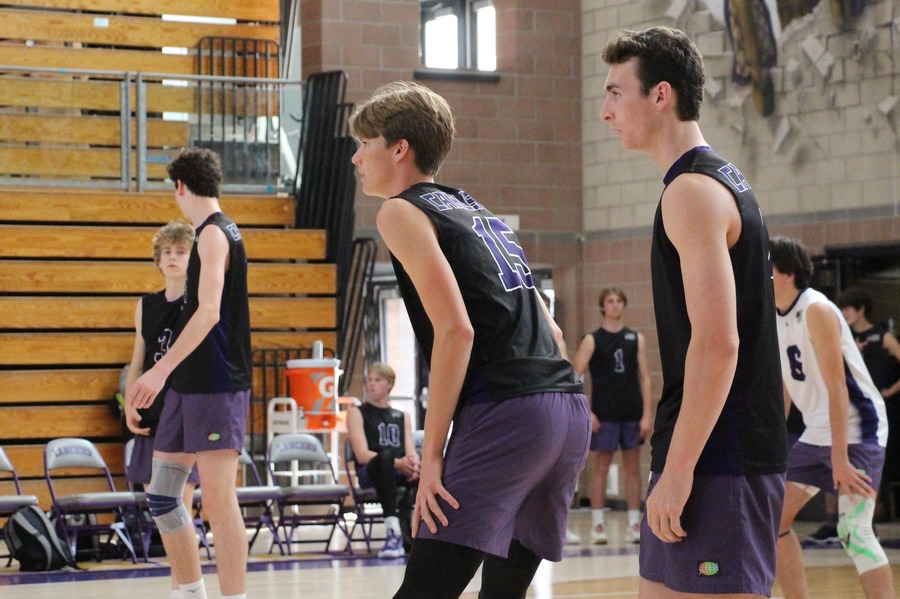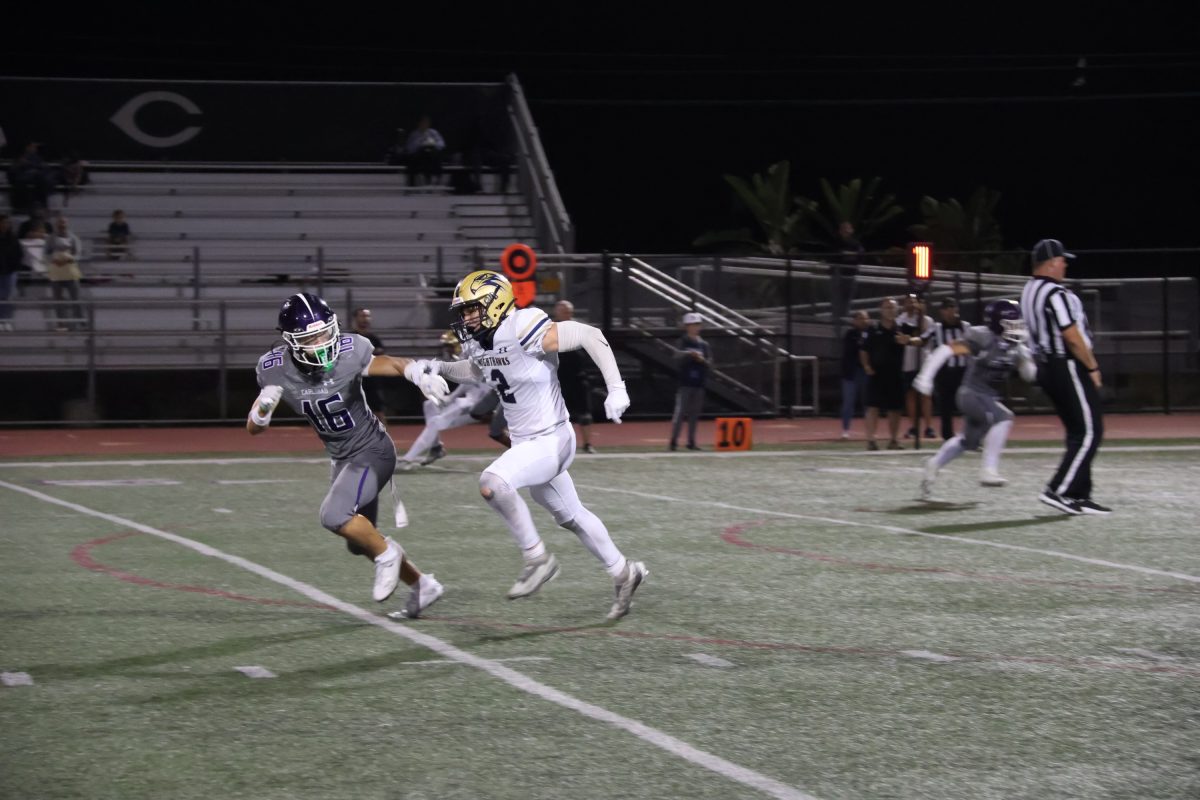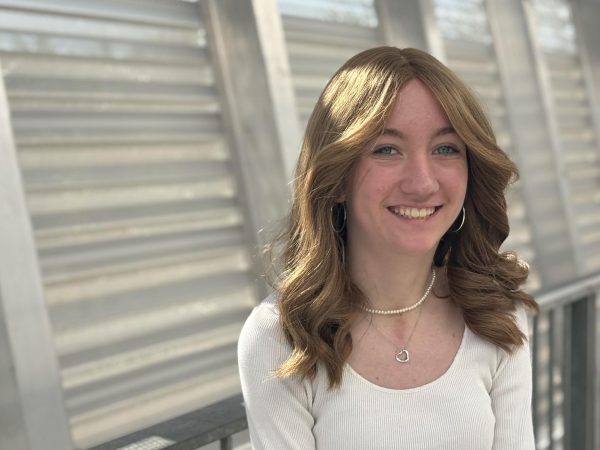With more than 50 sports teams at Carlsbad High, athletics play a huge role in school spirit and student life. However, athletics can cause a plethora of injuries, with over two million sports-related injuries occurring each year. This is where the sports medicine program steps in. They work to provide care and support to prevent injuries and facilitate the needs of those in recovery.
The sports med program is run by athletic director Brianna Millard. Millard, who has been certified for 14 years and has worked at Carlsbad for 7 years, is one of the main faces that helps on and off the field.
“I’ll be at as many home and away [sports] games as possible,” Millard said. “And I’ll deal with anything from preventative care to initial injury evaluation. I have lots of machines that can help with even more evaluation or things like recovery. Anything you can think of that has to do with injury, that’s what I take care of.”
Millard doesn’t do it alone, however. An entire group of students in the sports med class contribute their time and efforts as well. Senior Maya Crnkovich is in her second year of the program and enjoys multiple aspects of it.
“We help with cleaning and taping up [injured] players,” Crnkovich said. “And we help with both their physical injuries [and] their mentalities when it comes to recovery and playing again, which is something I didn’t know we would get to do.”
Injuries that come into the sports med building can range from minor, like simple cuts or an aching foot, to major, like senior Berkely Harris’ torn medial collateral ligament (MCL) and meniscus. Harris, an experienced soccer player, relied on sports medicine for her recovery journey.
“I had to get an assessment and then an MRI,” Harris said. “Once I got my results they gave me lots of information on how recovery would work and lots of help after school. Treatment like icing and taping my leg, exercises like heel slides, a lot of stuff.”
Since they work with athletes nearly every day, students in the sports med program get hands-on experience in the medical world. This gives them an advantage after high school if they choose to continue with medicine in the future, and, according to Millard, lots of students do.
“We have alumni that go into the medical realm quite frequently,” Millard said. “There are students doing nutrition at University of Arizona, one at Oregon working in neurology, and a lot more all over [the country]. The sports med program can help them narrow down what they want to do in the future since they get exposed to so many things.”
Millard believes that sports med allows students to learn more about medicine and gives them the chance to explore other opportunities in science. In addition to organizations across Carlsbad that allow students to get hands-on experience, Millard encourages her students to reach out to other clinics and healthcare programs.
“At our program, we give [students] an introduction to medical terminology and it allows them to communicate with an allied healthcare professional such as myself,” Millard said. “But if [students] have a large interest in the medical community, I encourage them to shadow or intern at clinics. I’ve seen students that, after volunteering, figure out, ‘Oh, I really want to be an EMT,’ or, ‘I don’t think I prefer sitting in a clinic all day.’”
Overall, Crnkovich believes the sports medicine program plays a crucial role in teaching students about medical care and supporting injured athletes. Under Millard’s supervision, Crnkovich has become more educated about the medical community and has learned critical skills that have conditioned her for her future career.
“Sports med has taught me so much,” Crnkovich said. “No matter what I do in the future, I feel I’ll be prepared.”



